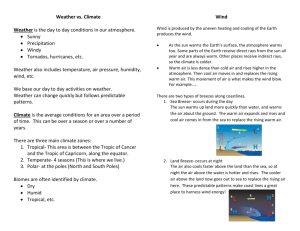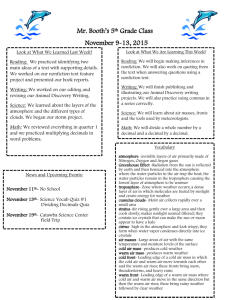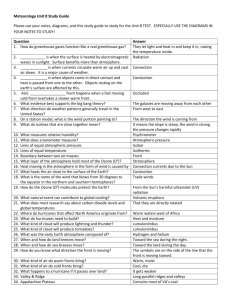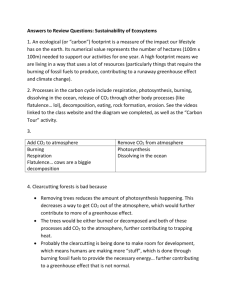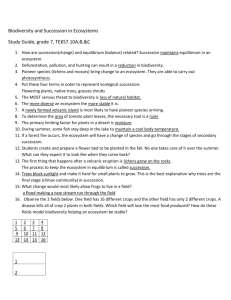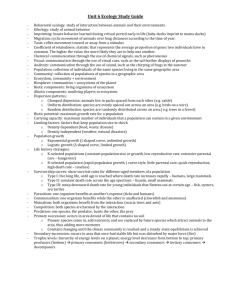Science Mid-term Review Sheet
advertisement
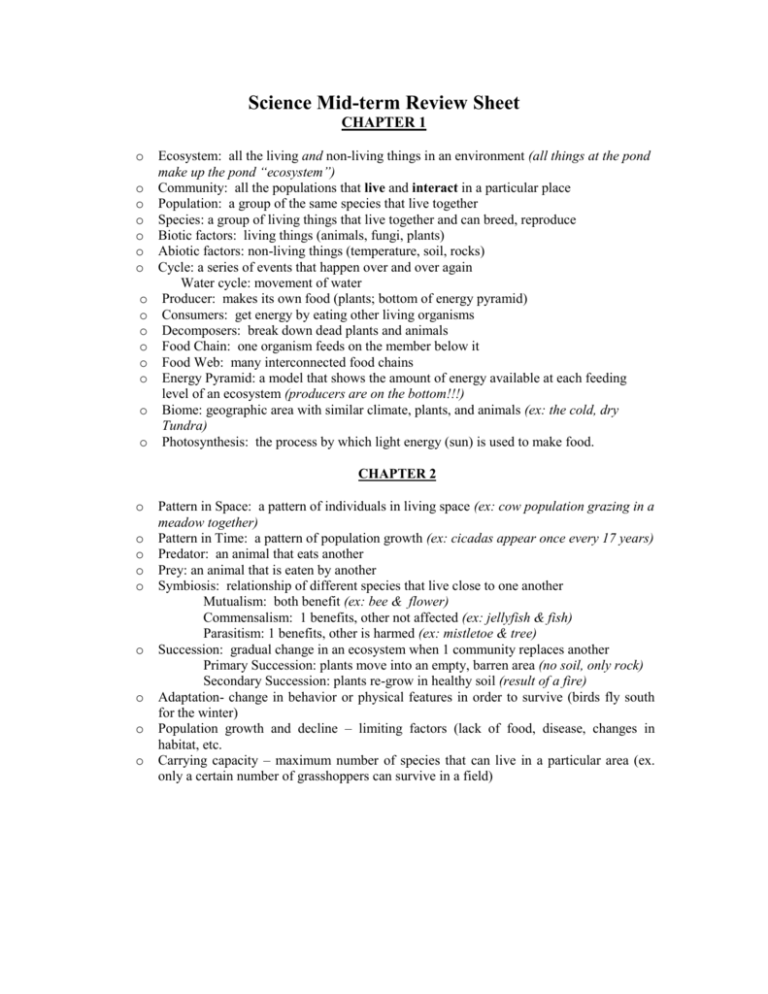
Science Mid-term Review Sheet CHAPTER 1 o o o o o o o o o o o o o o o Ecosystem: all the living and non-living things in an environment (all things at the pond make up the pond “ecosystem”) Community: all the populations that live and interact in a particular place Population: a group of the same species that live together Species: a group of living things that live together and can breed, reproduce Biotic factors: living things (animals, fungi, plants) Abiotic factors: non-living things (temperature, soil, rocks) Cycle: a series of events that happen over and over again Water cycle: movement of water Producer: makes its own food (plants; bottom of energy pyramid) Consumers: get energy by eating other living organisms Decomposers: break down dead plants and animals Food Chain: one organism feeds on the member below it Food Web: many interconnected food chains Energy Pyramid: a model that shows the amount of energy available at each feeding level of an ecosystem (producers are on the bottom!!!) Biome: geographic area with similar climate, plants, and animals (ex: the cold, dry Tundra) Photosynthesis: the process by which light energy (sun) is used to make food. CHAPTER 2 o o o o o o o o o Pattern in Space: a pattern of individuals in living space (ex: cow population grazing in a meadow together) Pattern in Time: a pattern of population growth (ex: cicadas appear once every 17 years) Predator: an animal that eats another Prey: an animal that is eaten by another Symbiosis: relationship of different species that live close to one another Mutualism: both benefit (ex: bee & flower) Commensalism: 1 benefits, other not affected (ex: jellyfish & fish) Parasitism: 1 benefits, other is harmed (ex: mistletoe & tree) Succession: gradual change in an ecosystem when 1 community replaces another Primary Succession: plants move into an empty, barren area (no soil, only rock) Secondary Succession: plants re-grow in healthy soil (result of a fire) Adaptation- change in behavior or physical features in order to survive (birds fly south for the winter) Population growth and decline – limiting factors (lack of food, disease, changes in habitat, etc. Carrying capacity – maximum number of species that can live in a particular area (ex. only a certain number of grasshoppers can survive in a field) MICROSCOPES o o o o o Preparing a slide: 1) put specimen on the slide 2) place a drop of water on the slide so the cover slip will stick 3) place the cover slip on the slide by touching one edge to the water and gently lowering it (cover slip will flatten out the specimen, holding it in place) What you look for in a good slide: no air bubbles and a clear view of the specimen. Pocket Scope: a small, hand-held microscope that is best used when looking through it at a light colored (white is best) piece of paper. Microscopic: too small to be seen without a magnifier KNOW THE PARTS OF THE MICROSCOPE AND HOW TO USE THEM TO FOCUS IN ON A SPECIMEN!!!! WEATHER Weather – condition of the atmosphere on a particular day Climate – weather conditions over a long period of time (for example, five years) o o o o o o o o o o Wind- occurs when air moves from an area of high pressure to an area of low pressure Land breeze- when the wind blows from the land to sea (occurs at night) Sea breeze- when the wind blows from the sea to land (occurs during the day) Anemometer – measure wind speed Relative humidity- amount of moisture in the air Clouds – moisture or water droplets condense in the air Cumulus Clouds- puffy, white, fair, sometimes showers Cumulonimbus- dark, black,puffy, thunderstorm Stratus – “blanket” of clouds steady rain Cirrus – feathery, thin whispy, fair o Psychrometer – measures humidity (be able to use relative humidity chart) o Cold Front- mix of cold and warm air could lead to violent storms o Warm Front – warm weather could occur o Stationary Front- warm and cold air meet, but stay in one place (steady rain) o o o o o o Temperature- amount of heat in the air Thermometer – measures temp Sun’s energy heats the earth Greenhouse Effect Carbon Dioxide gas is created from pollution Pollution of the atmosphere leads to the greenhouse effect which may cause an increase in temperature on earth o In order to help prevent the greenhouse effect we need to use less fossil fuels including oil o Air pressure - force of air pressing down on the atmosphere o Air pressure depends on the density of the air( dense air in toward the ground, less dense air rises o Warm air is less dense than cold air (heat rises) (Hint* the 2nd floor of a building is always hotter than the 1st floor) o Barometer – measures air pressure (inches of mercury) o Layers of the atmosphere – Troposphere – where weather takes place Stratosphere – contains the ozone – protects us from UV light
